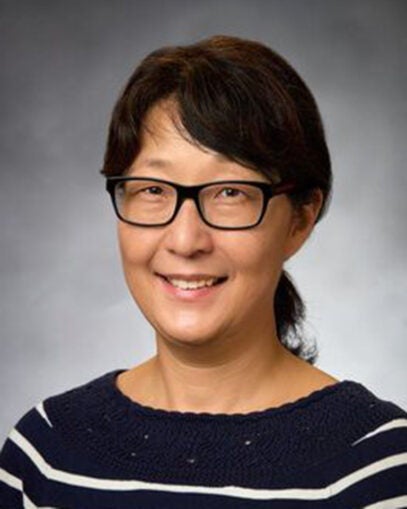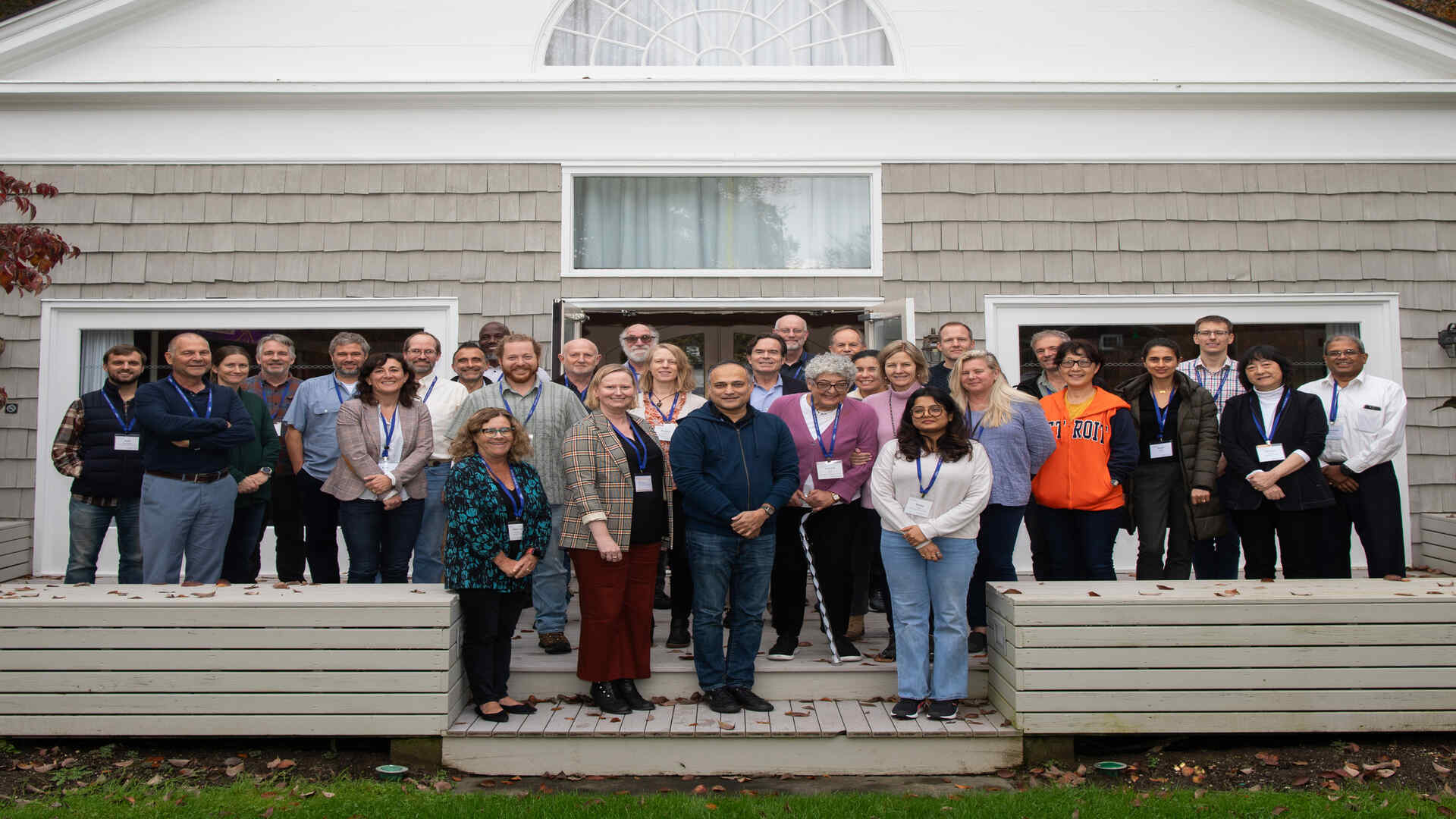During the Banbury Center’s October 2023 meeting, “The Future of Plant-Environment Interactions: Challenges and Opportunities in a Changing Climate,” I had the opportunity to meet Seung Yon (Sue) Rhee, Ph.D. Professor Rhee is Michigan State University Research Foundation Professor in the departments of biochemistry and molecular biology, plant biology, and plant, soil, and microbiology. She is also director of MSU’s Plant Resilience Institute. Professor Rhee earned her B.A. in biology from Swarthmore College, and her Ph.D. in biology from Stanford University. We spoke about her experience fostering the next generation of scientists, as well as emergent challenges and opportunities for the plant resilience field.

Can you tell me about what you do in, more or less, two sentences?
I work on how plants can persevere against climate fluctuations and environmental hardship. I lead a small group of people who are interested in understanding and engineering plants that can be resilient against different hardships.
What is your favorite part about what you do? What gets you excited to go to work?
These days, I get really excited about working with the next generation of scientists: students, postdocs, and research assistants who are engaged in discovering new things about plants. I get really excited about finding out what their latest discoveries are, and talking about what problems they are encountering, then trying to solve those problems together.
I’ve been doing research vicariously for a while, because once you become a group leader, it gets harder and harder to do research yourself; you become more of a manager. Over the years, I’ve really enjoyed the process of discovery through conversations – especially with people in my lab and collaborators – and coming up with new ideas or solutions at the end of the conversations that none of us anticipated. That process of discovery through collaboration is something that’s really exciting for me right now.
What are some of the challenges you face in your work?
Well, I think this is common for all scientists – it’s very challenging to publish your work, and get funding to do your work. We have to do paperwork to get things going, which makes it challenging to do what we want to do. I think that we spend way too much time dealing with getting papers published, and getting grants funded. Those are the main challenges, I would say.
What is a common misconception about your work?
I think that there’s an expectation that research should result in products or progress, and I think that’s certainly what happens, but it’s a long game. It takes decades, sometimes hundreds of years to get to a product. A good example is mRNA discovery, which happened in 1961. Now, we are all benefiting from mRNA vaccines in the global pandemic. Hybrid corn has a similar story; it was discovered in 1871 by William Beal, who was actually a plant scientist at Michigan State University. He learned by crossing different varieties of corn that there was hybrid vigor. But it wasn’t until the early 1960s that most cornfields in the US – over 95% – were growing hybrid corn. So, it took close to 100 years for that technology adoption to happen.
We do need to work on getting to products or progress more quickly, because climate change is happening so fast, and we don’t have a whole lot of time.
How did you first become interested in how plants adapt and acclimate to changes in temperature, water availability, or nutrient limitations?
I would say it first clicked for me when we were having a series of heat waves in California in the mid-2010s. It was then that I started thinking, “I should direct my energy and research toward contributing to addressing the climate crisis.”
I’ve known about climate change for a long time, but there wasn’t a visceral sense of, “This is actually happening now.” There’s a lot of, “By 2050, we have to do this, and by 2070, this is going to be this way.” But climate change has been happening for decades, and we’re experiencing it every day.
You’ve trained over 160 scientists, many of whom have achieved leadership positions in academia, government, and industry. If you could impart one lesson on to your students, what would you most want them to learn?
I think that perseverance is what I would want to talk about. It’s interesting that we’re trying to study plant resilience, which is perseverance against hardship. Plants deal with fluctuations in their environments on a nanosecond basis, and understanding the complexities of how they do this is very humbling.
I think perseverance is an important thing for scientists because we get rejections most of the time, and discovery is a slow process. Once in a while you may have a breakthrough, but they’re infrequent. I think that enjoying the process of discovery through working with others, and persevering through the difficulties of the work, are things that I would talk about with the next generation of scientists.
This is your third Banbury meeting over the course of three decades, your first in 2003, and your second in 2013. How has your experience evolved over the years?
There is consistency, and change as well. It’s always fun to come together – in such a small, beautiful group setting – with these people who are very thoughtful and diverse in their thinking. I think that it’s a great example of the privilege of being a scientist – being able to spend a few days in a place like this, discussing what you care about.
The difference, of course, is in the topic that we’re talking about; each of these topics is important and emergent, and each of these meetings has an impact on the field. One of the most exciting things about participating in a Banbury meeting is that, after talking to people intensively for three days, we can change our mindsets or learn about new possibilities.
Is there a general topic or discussion that you have particularly enjoyed?
We’re less than halfway into the meeting, so I’m excited to see what’s going to happen, but so far, what’s most exciting is the possibility of changing the way that we think about climate change research. During the last session, we talked about microbial biostimulant technology for agriculture. I learned that there’s over 100 products out there that are essentially a bacterial mix for farmers put into soil to increase soil health. Apparently, most of them don’t work, and apparently, farmers already know that; I didn’t know about that! I think that’s a really bad thing for agriculture, technology developers, companies, and scientists working on microbiome research. That kind of finding should direct funding agencies to first find out why things are not working; second, to figure out ways to make things work; and third, try to get the word out. I think that we should create a nonpartisan group to perform rigorous testing and vetting. I’m worried about farmers having a bad experience with these early products and forming a negative perception of regenerative and sustainable technology, which, in turn, could harm the progress of the movement. The meeting has made me realize, “Oh, this is a big problem that we should try to solve.”

